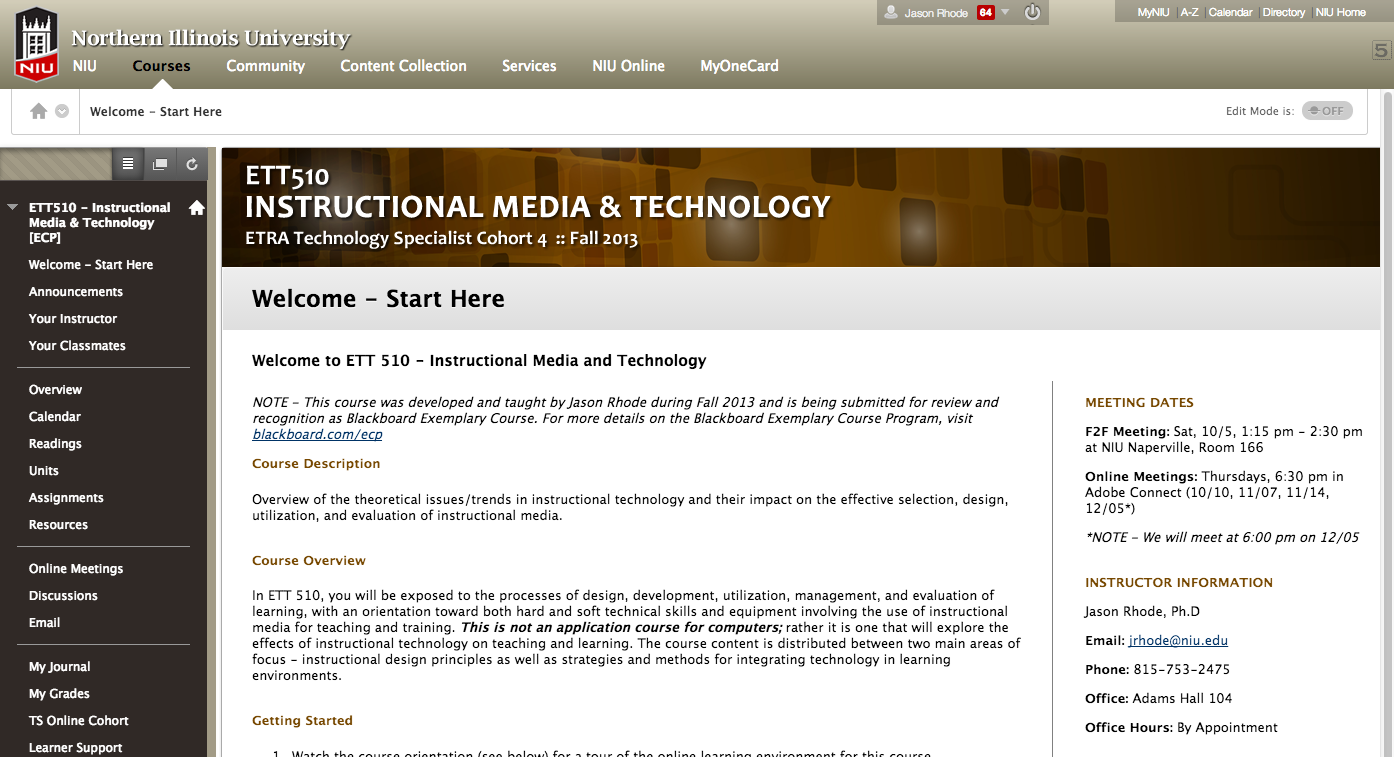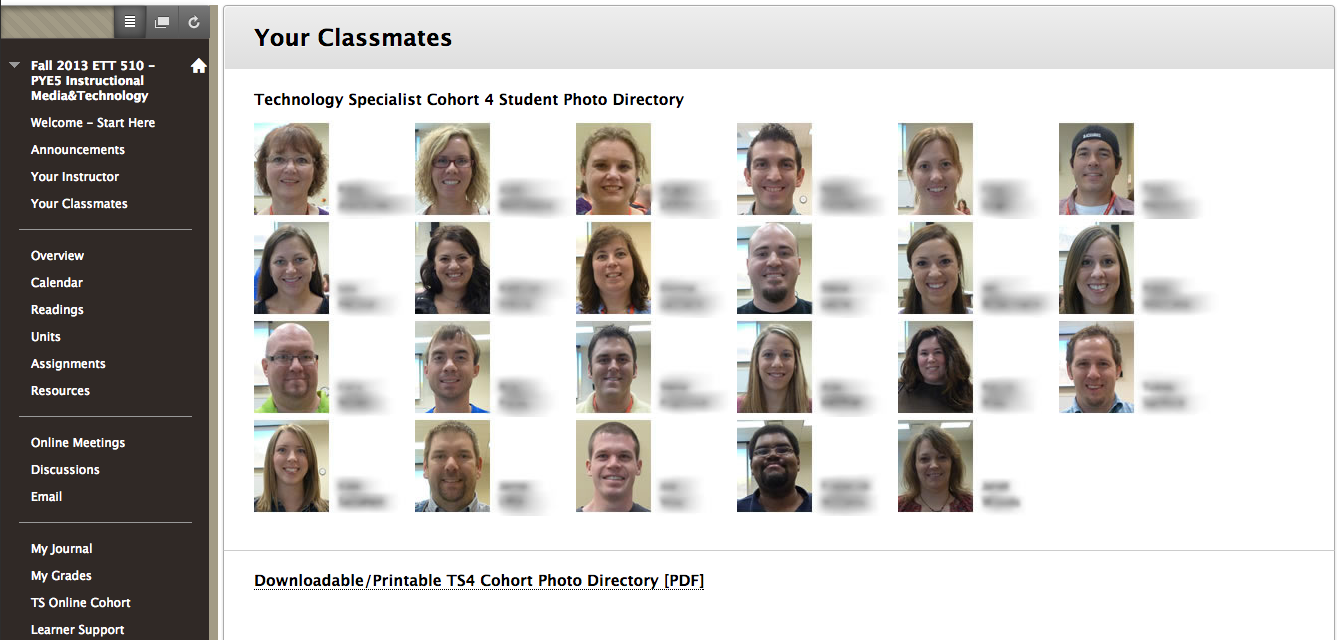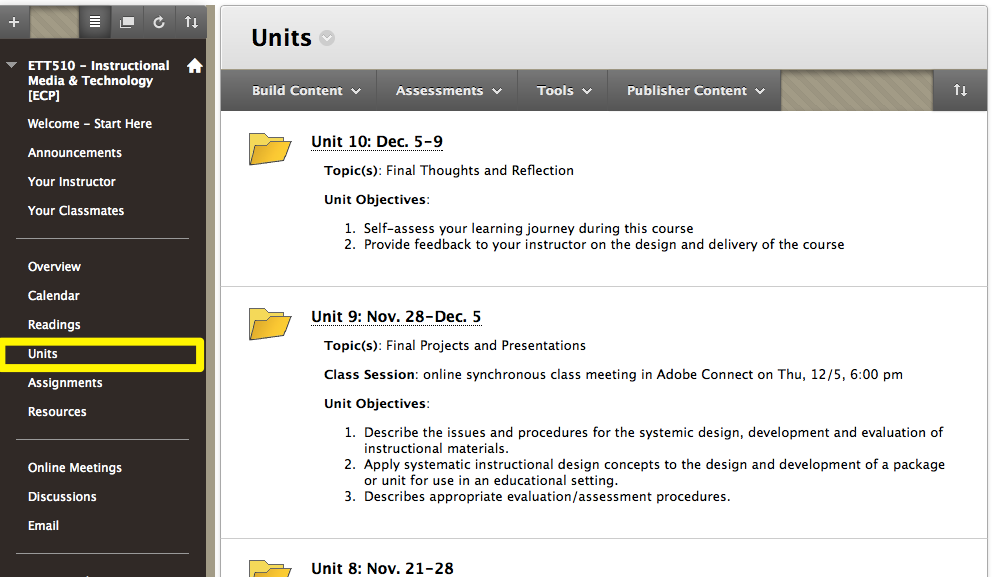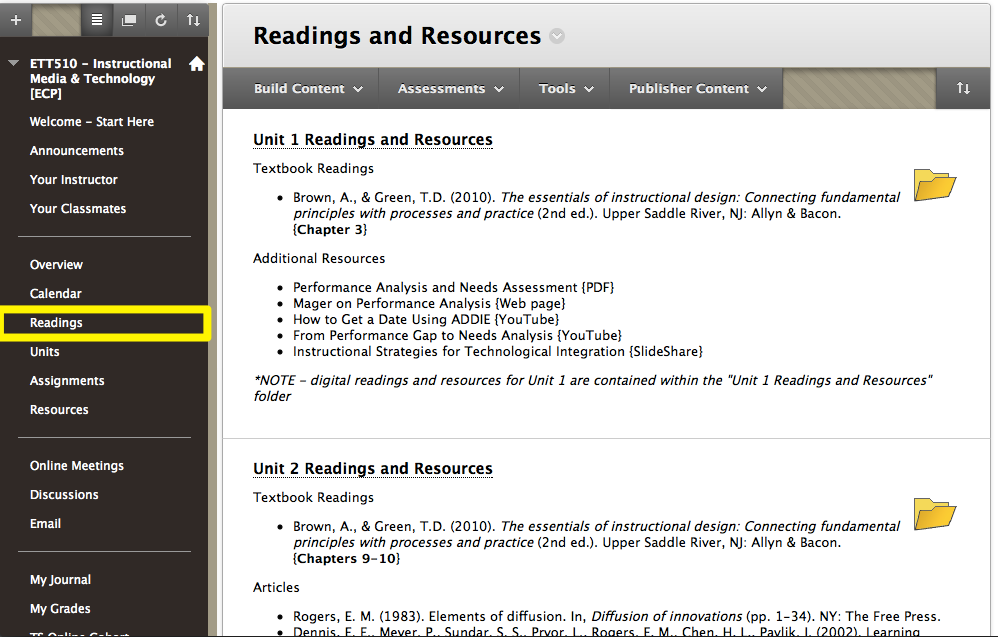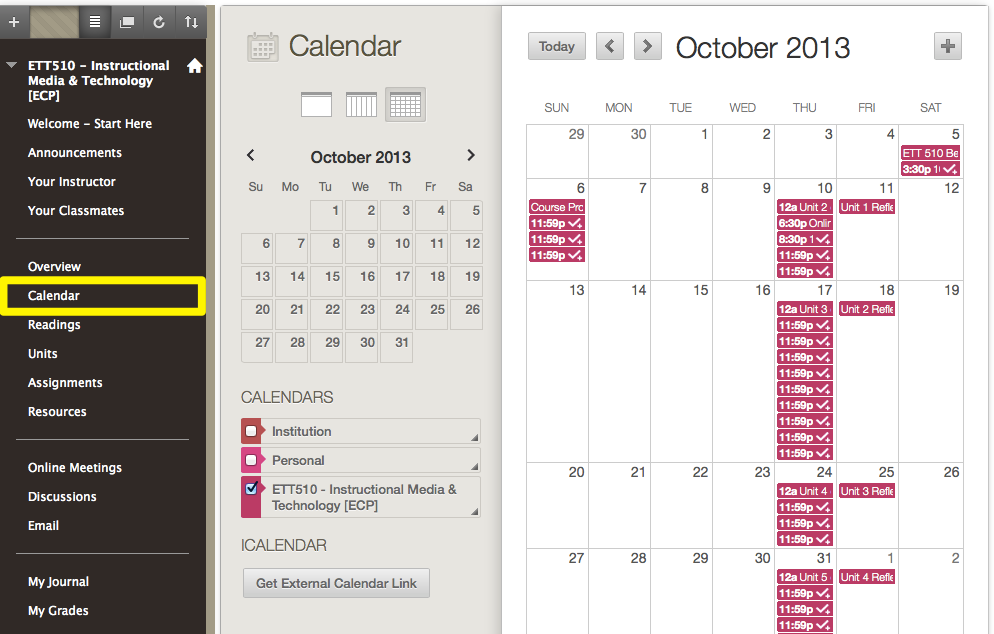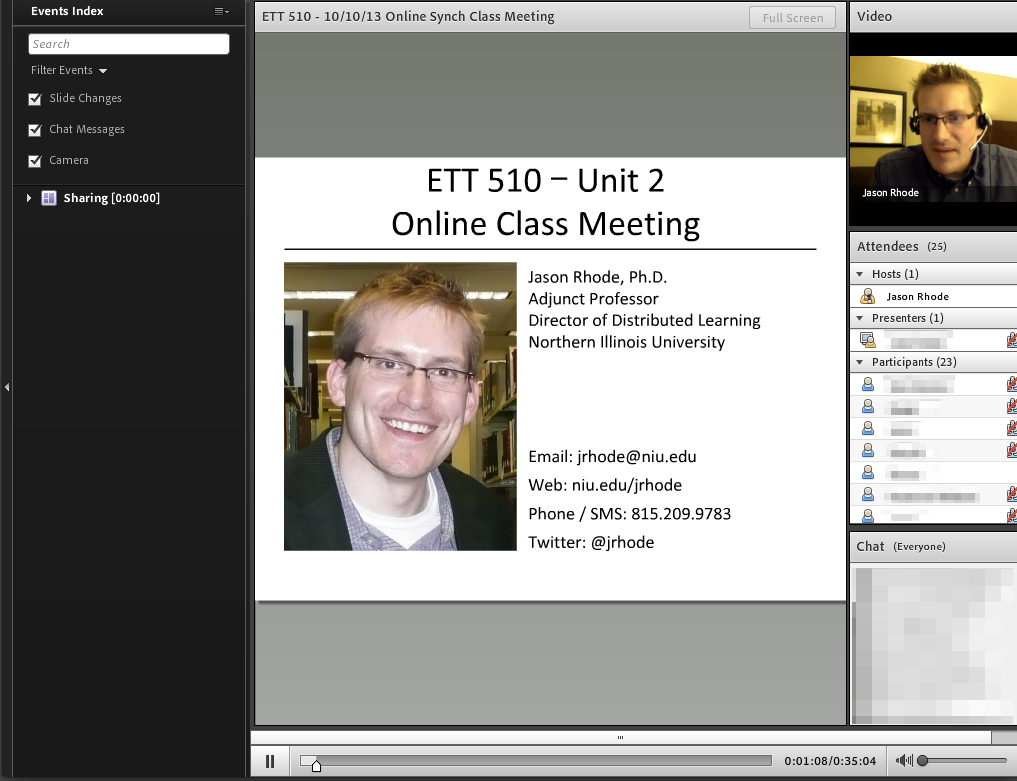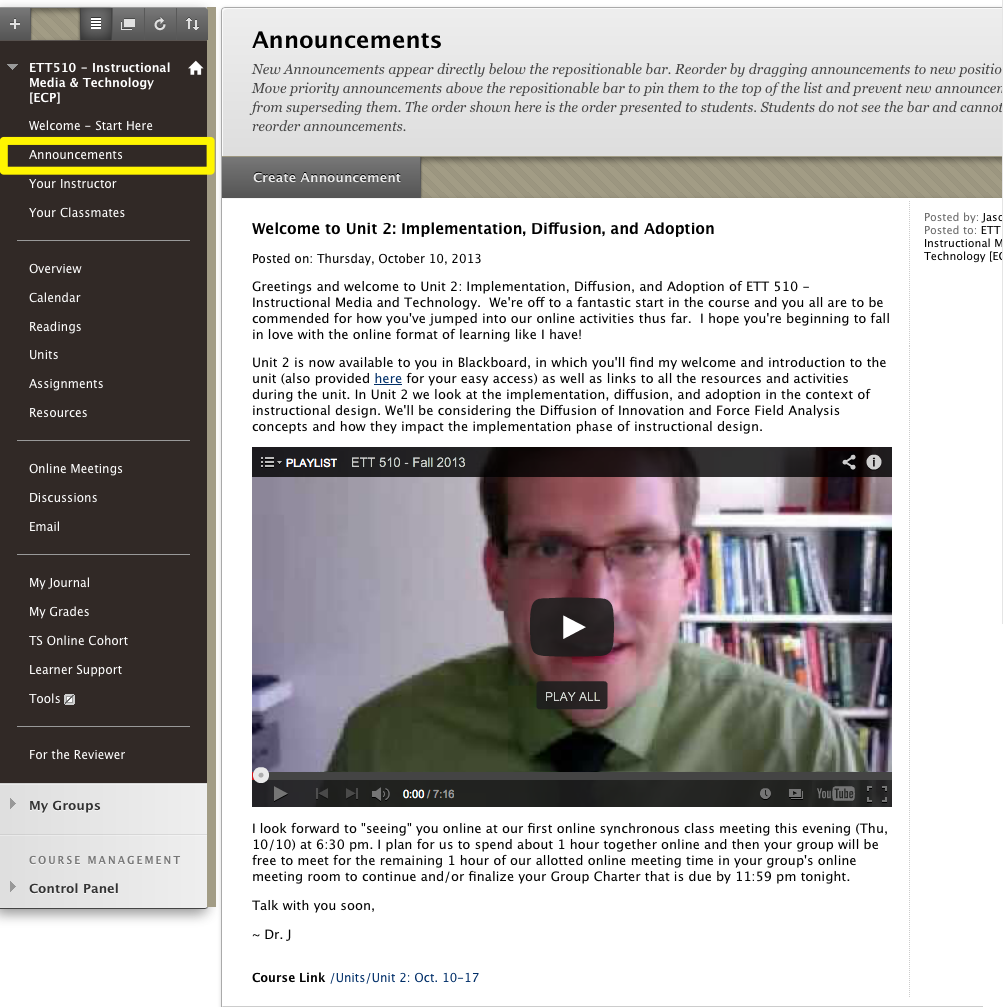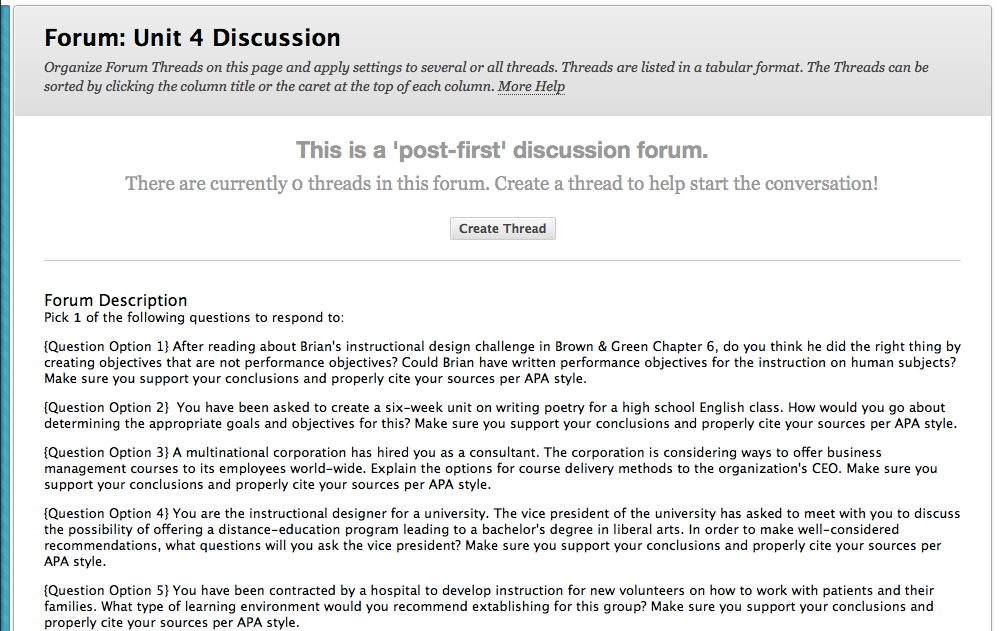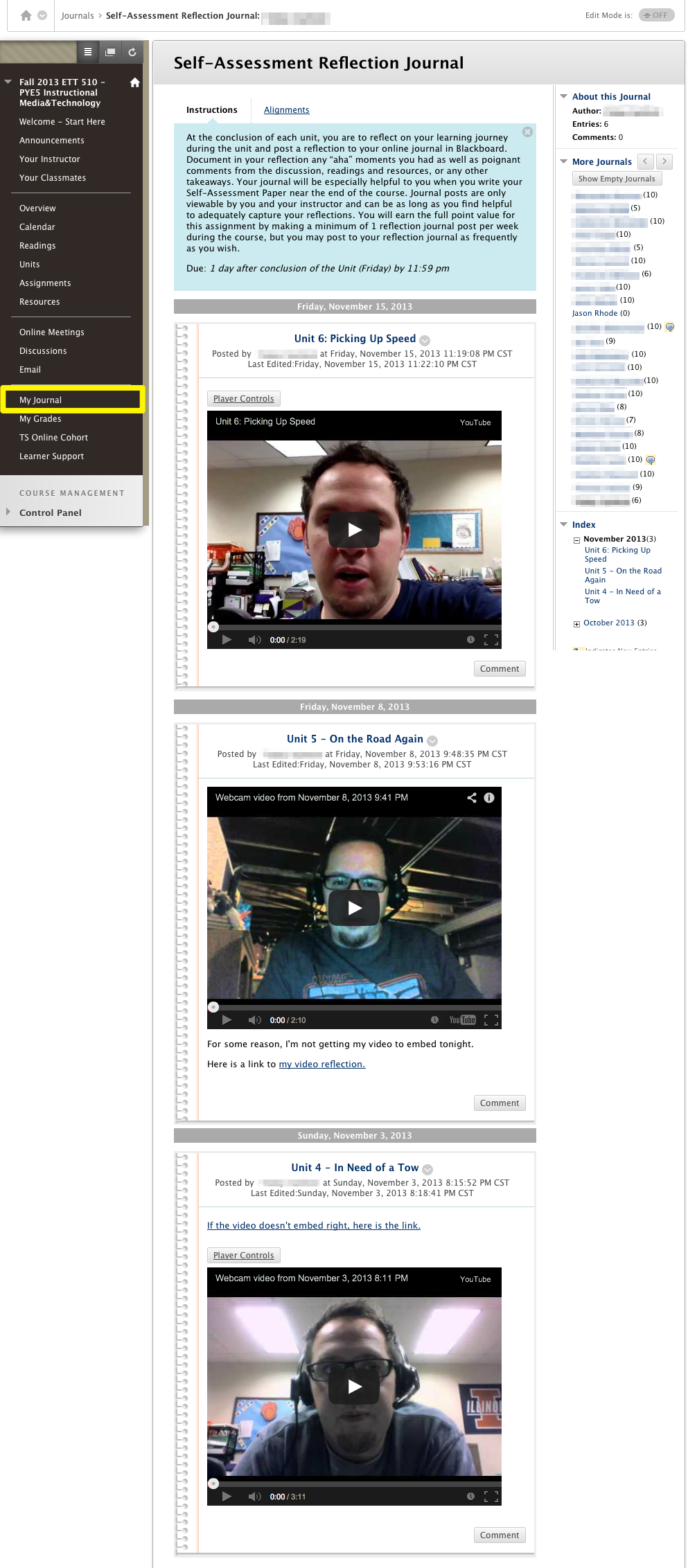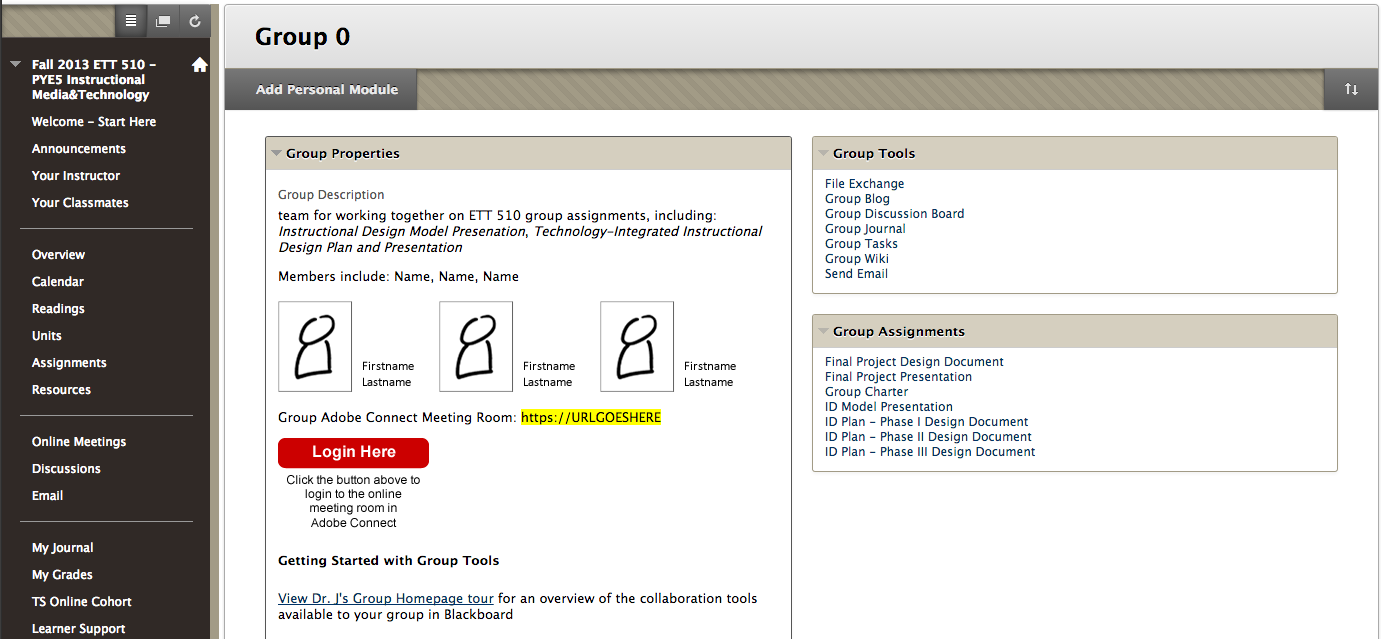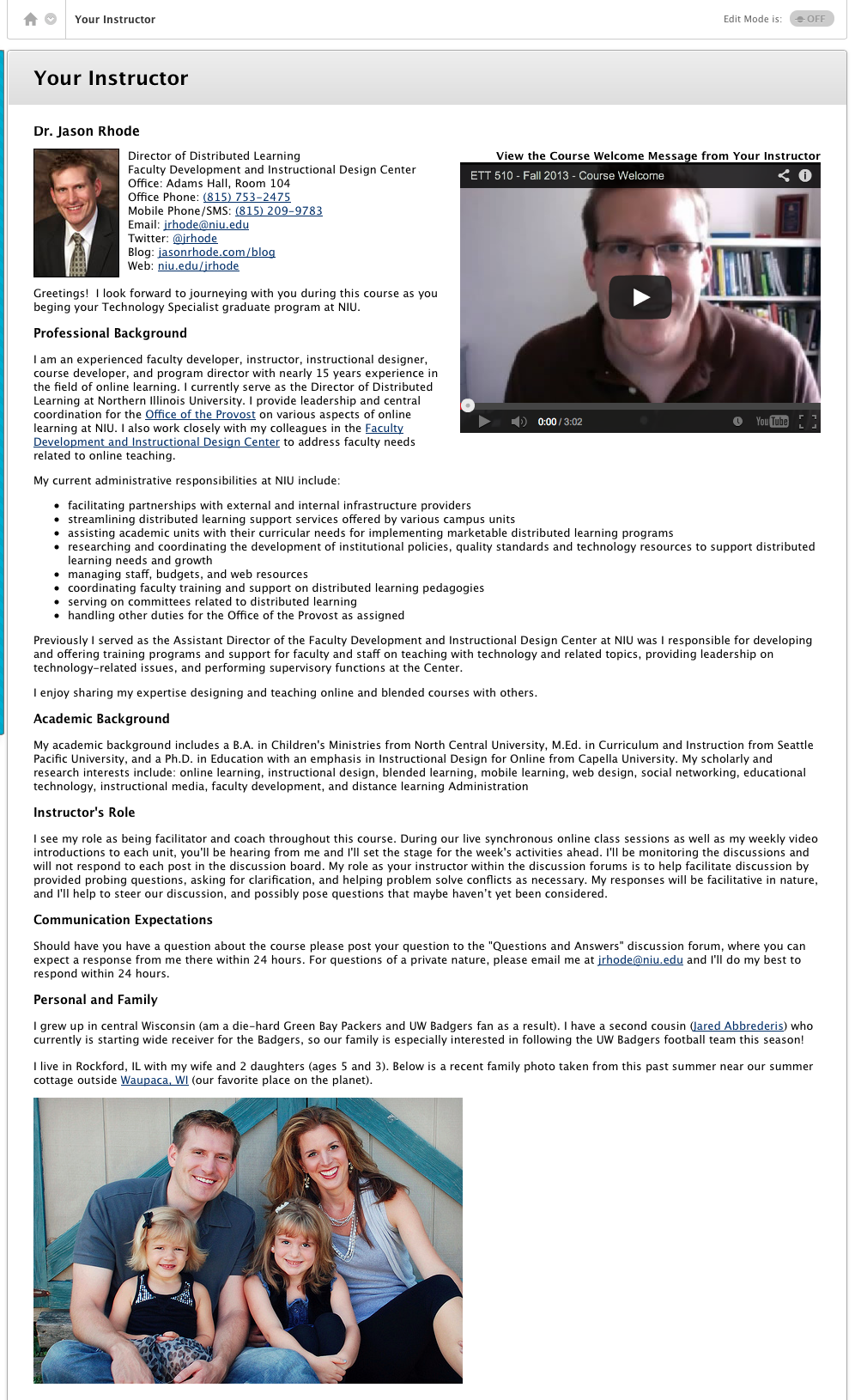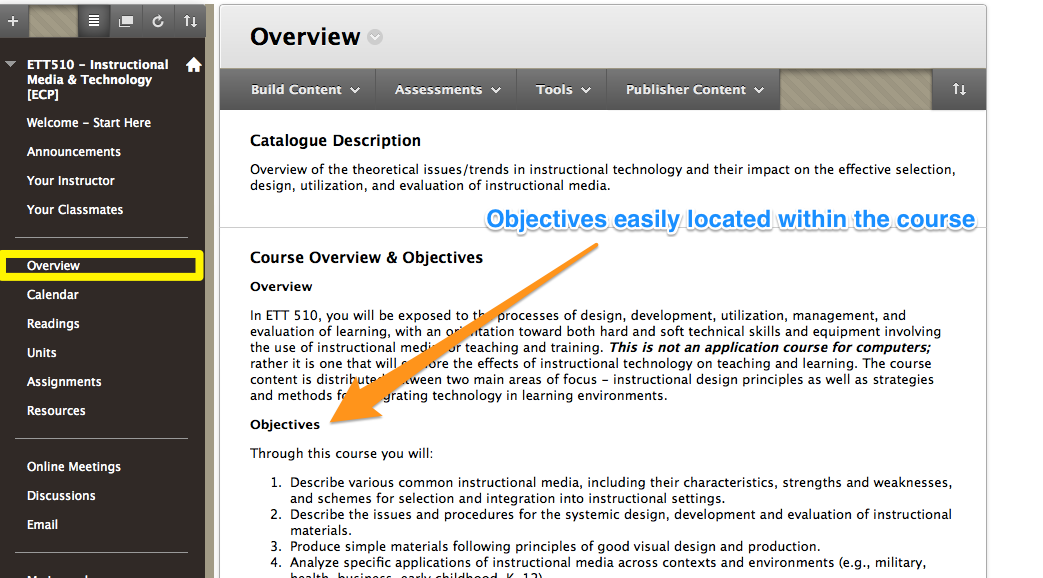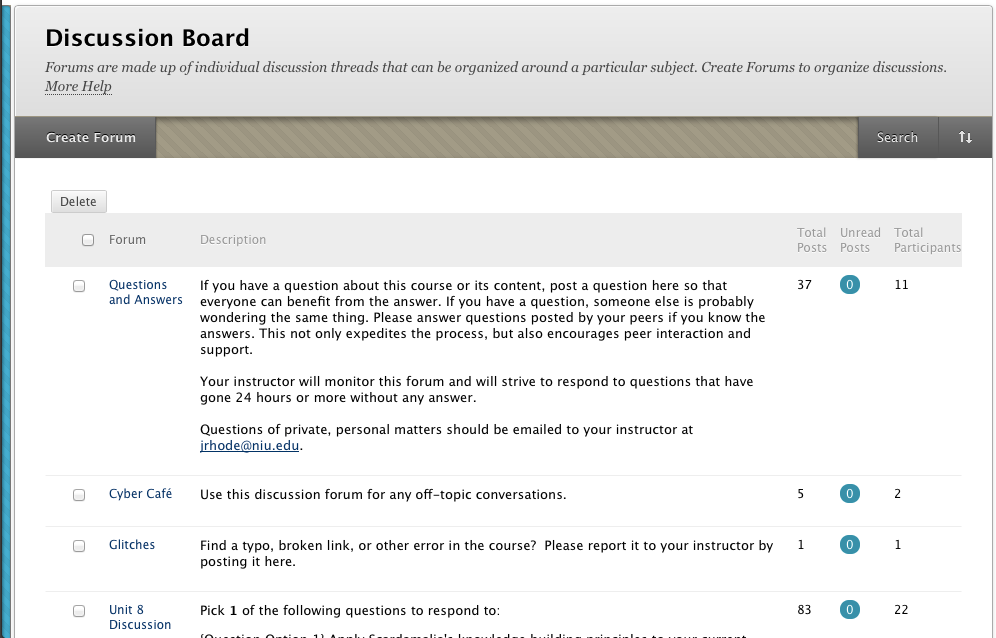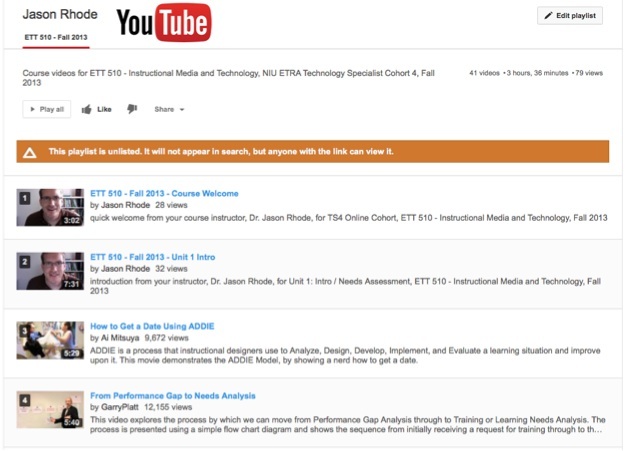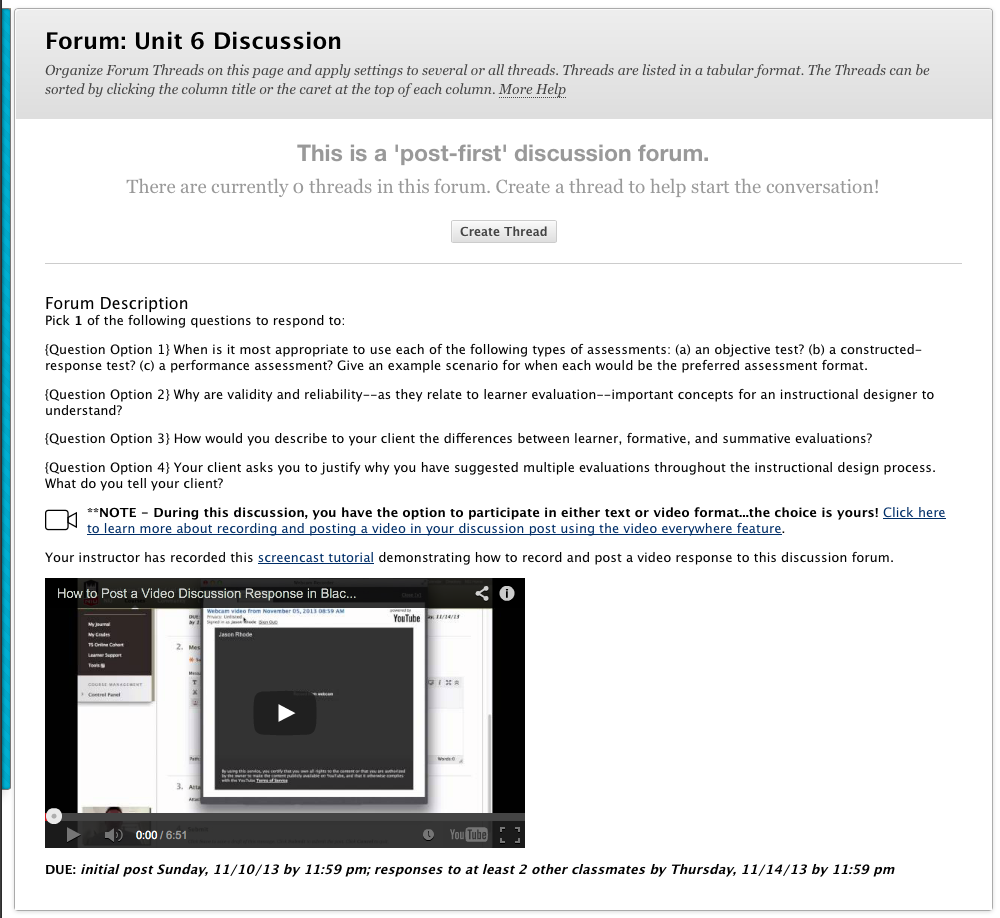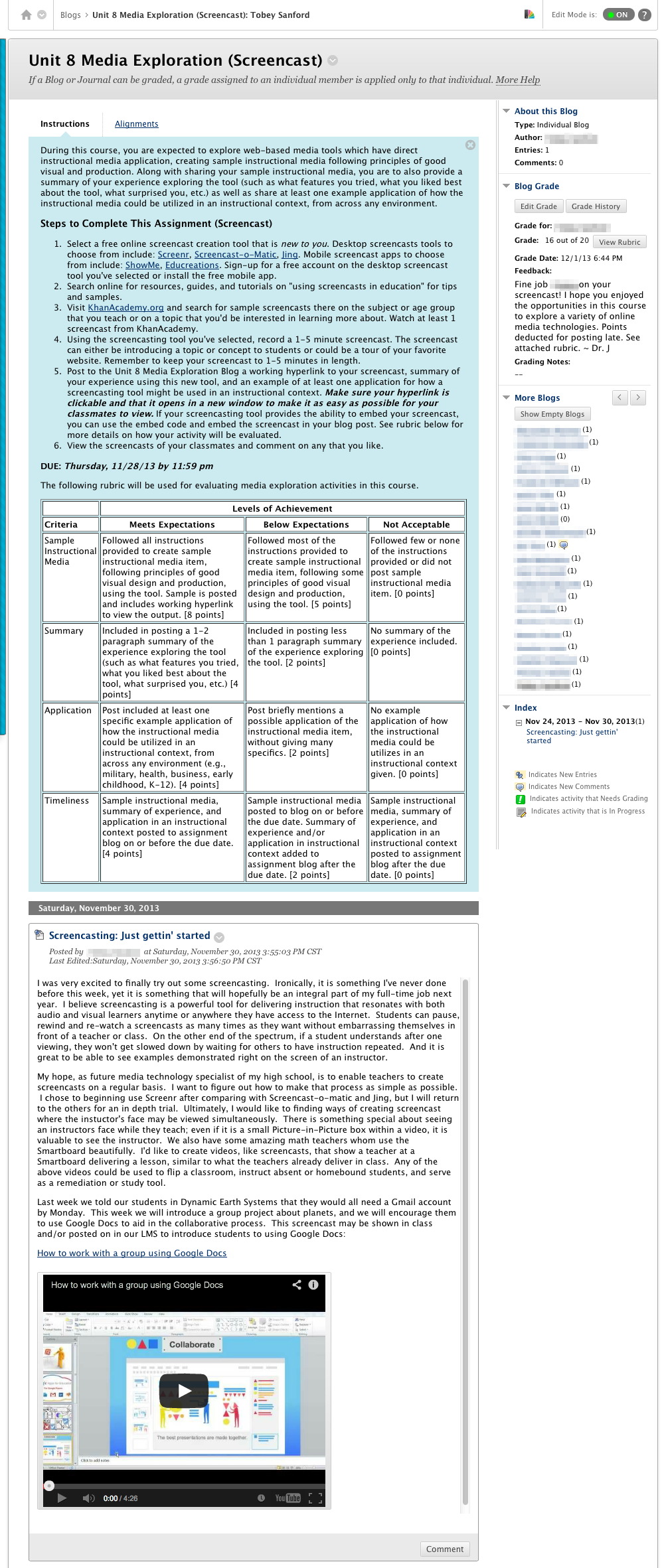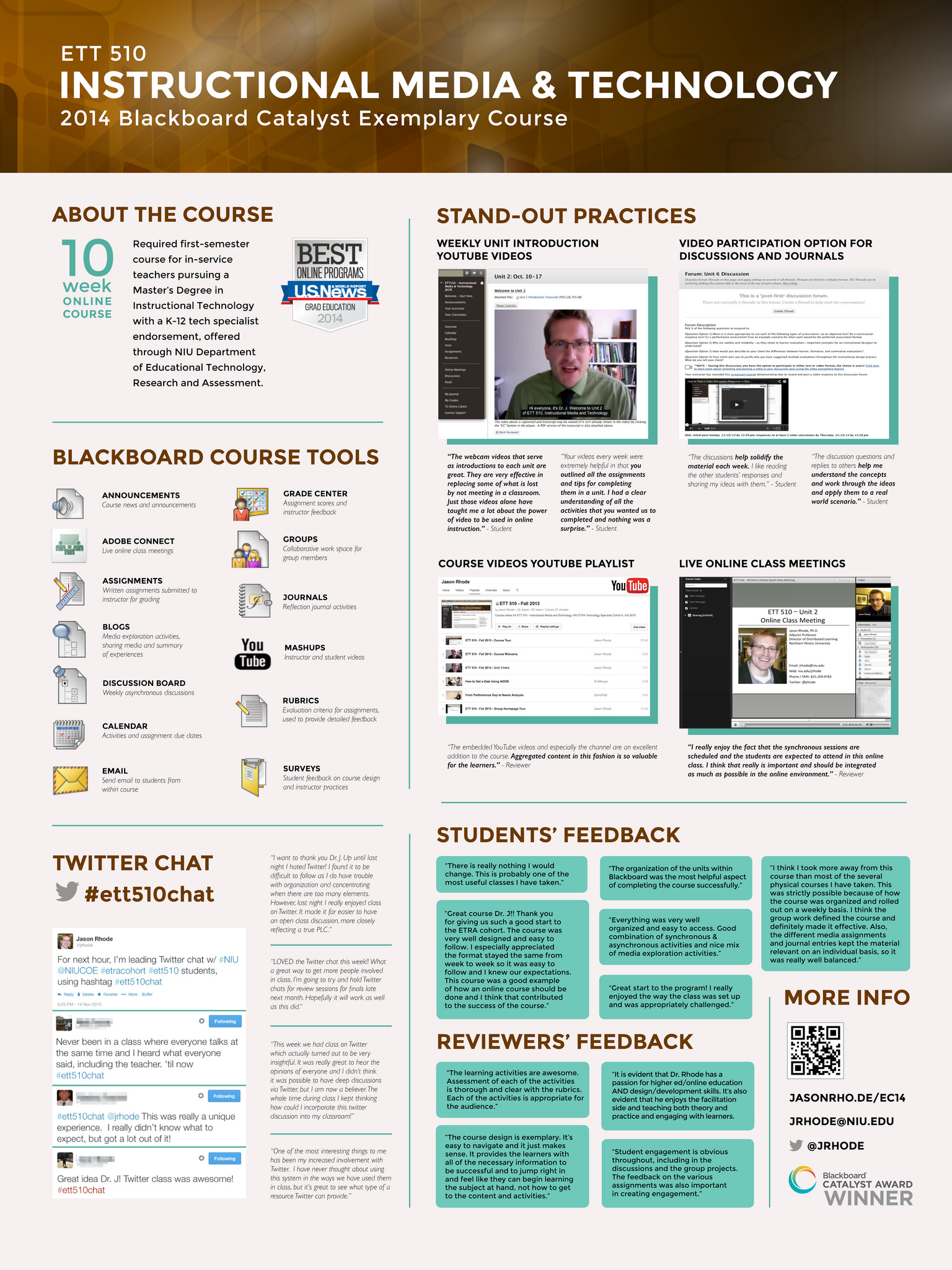In this video David White (@daveowhite) of the University of Oxford explains how the Visitors and Residents model provides a framework to understand individuals’ engagement with the Web based on motivation and context. In part 1 of this series, he argues that the metaphors of ‘place’ and ‘tool’ best represent the use of technology in contemporary society and allow us to better adapt to the challenges of new forms of academic practice.
In part 2, David explains how the Web is changing academic practice and challenging traditional notions of credibility and authority.
Do his thoughts resonate with your experience with the Web? Leave a comment with your thoughts!


 Jason Rhode receiving Blackboard Catalyst Exemplary Course Award at BbWorld14
Jason Rhode receiving Blackboard Catalyst Exemplary Course Award at BbWorld14